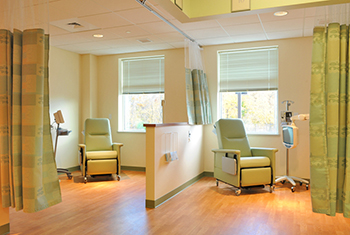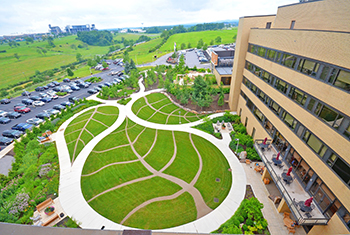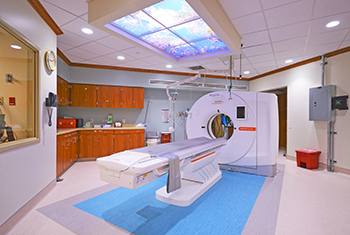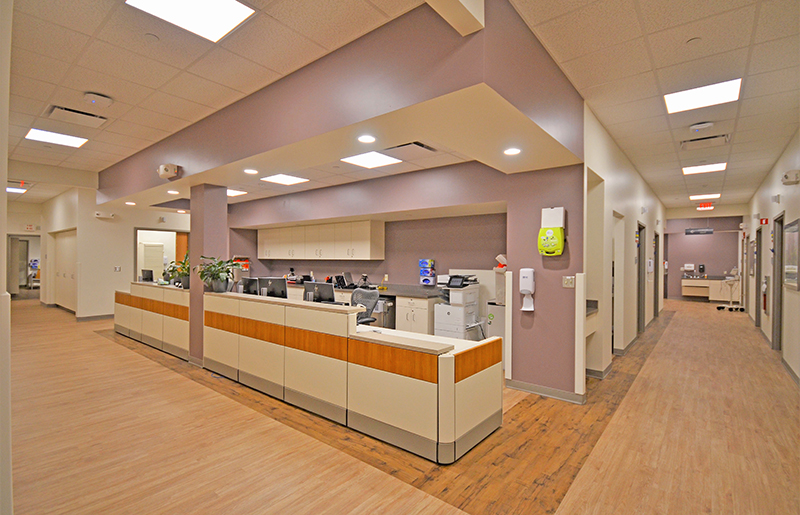


Cancer, a formidable adversary that affects millions worldwide, not only demands advanced medical treatments but also compassionate and supportive environments for those undergoing treatment. In the realm of healthcare design, architects and engineers play a crucial role in creating oncology spaces that not only facilitate medical care but also promote healing and well-being. JPT’s Architects and Engineers design oncology spaces that prioritize patient comfort, emotional well-being and therapeutic effectiveness.
The Intersection of Design & Healing
Designing spaces for oncology treatment involves a delicate balance between functionality and creating an environment that fosters hope and healing. JPT’s Architects and Engineers collaborate closely to integrate cutting-edge medical technology with thoughtful and patient-centric design elements. The goal is to create spaces that reduce stress, promote positive experiences and contribute to the overall well-being of cancer patients.
Patient-Centric Design
As Architects who specialize in healthcare design, JPT understands the unique needs of cancer patients. The focus is on creating layouts that prioritize accessibility, comfort, and privacy. Patient-centric design includes considerations for natural light, views of nature, and soothing color palettes to enhance the healing environment. Waiting areas are designed to be warm and inviting, providing a sense of comfort to patients and their families during challenging times.
Integration of Technology
JPT’s Engineers work hand-in-hand with our Architects to integrate advanced medical technology seamlessly into the design of oncology spaces. This includes state-of-the-art treatment rooms, diagnostic facilities and patient monitoring systems. The aim is to provide healthcare professionals with the tools they need while ensuring that patients feel supported and at ease during their treatments.

Creating Therapeutic Landscape
JPT’s Architects recognize the importance of outdoor spaces in promoting healing. Oncology spaces often include carefully designed therapeutic landscapes, such as gardens and outdoor seating areas. These spaces offer patients a respite from the clinical environment, allowing them to connect with nature and find solace during their treatment journey.
Flexible & Adaptable Spaces
The dynamic nature of healthcare requires architects and engineers to design oncology spaces that are flexible and adaptable. The ability to reconfigure spaces based on evolving medical technologies and treatment approaches is essential. This flexibility ensures that oncology facilities can stay at the forefront of medical advancements and continue to provide the best possible care for patients.
Holistic Healing Environments
Our integrated Architectural and Engineering team’s collaborations does beyond the physical structure; it extends to the creation of holistic healing environments. Integrating art installations, music therapy spaces, and wellness programs contributes to a comprehensive approach to cancer care. These elements aim to address the emotional and psychological aspects of the patient experience, promoting a sense of hope and positivity.
Designers can be instrumental in shaping the future of oncology spaces, creating environments that go beyond traditional medical facilities. Their collaborative efforts result in spaces that prioritize the well-being of cancer patients, fostering healing on multiple levels. As the field of healthcare design continues to evolve, the work of these professionals ensures that oncology spaces provide not only cutting-edge medical care but also a supportive and healing environment for those facing the challenges of cancer.